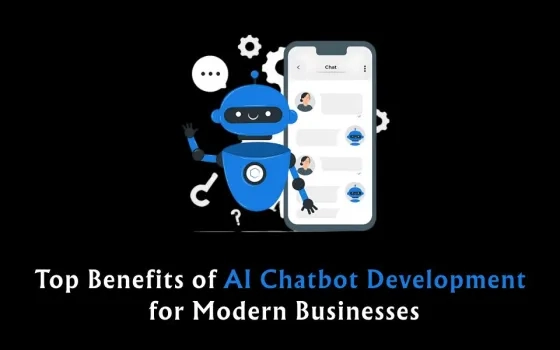Amid the surge in automated software quality assurance, Generative Artificial Intelligence (AI) is gaining widespread acceptance in software testing. The application of Generative AI for quality assessment signifies a progressive approach aimed at enhancing performance and precision by automating numerous tasks traditionally carried out through manual testing and the quality assurance lifecycle.
In a recently published report, the automation testing market is experiencing substantial growth at a Compound Annual Growth Rate (CAGR) of 17.06%, projected to reach USD 93.6 billion by 2032.

The integration of rapid Generative AI-enabled technologies in software quality engineering is fundamentally transforming traditional manual testing methods. This evolution forms a harmonious synergy between humans and algorithms, operating within the framework of machine learning (ML), deep learning (DL), and natural language processing (NLP). This approach is revolutionizing the landscape of QA practices by addressing the most critical challenges faced by software quality assurance (QA) teams.
Unlocking the Advantages of Generative AI in Software Testing: A Next-Level QA Approach
In the quality assurance lifecycle, manual testing introduces numerous challenges, leading to errors, testing gaps, limited coverage, and prolonged labor-intensive tests. Placing Generative AI at the core of the QA process accelerates business innovation by swiftly identifying patterns, anomalies, and software vulnerabilities, along with predicting potential issues. Its widespread adoption streamlines quality assurance endeavors, ensuring comprehensive test coverage, effective risk management, heightened quality standards, and reduced operational overhead—all while adhering to best practices.
The AI-enabled quality engineering process enhances data control by maintaining a balance between automated and manual quality analysis throughout software development workflows. This empowers QA experts to concentrate on complex tasks like exploratory testing and root cause analysis, fostering a more efficient and effective quality assurance process. Generative AI transforms manual testing challenges into streamlined and innovative quality assurance practices.
Generative AI fundamentally revolutionizes the manual testing and quality assessment process in various impactful ways:
1. Test Planning Enhanced by Generative AI:
Generative AI plays a pivotal role in software test planning, furnishing QA engineers with valuable insights. It helps testing engineers pinpoint the optimal tools tailored to their specific testing requirements and recommends a comprehensive suite of testing tools.
Moreover, Generative AI empowers manual testers to proactively identify potential risks, including compatibility issues and domain benchmarks, during the initial planning phase. This is achieved through the analysis of historical data, code metrics, and project specifications.
The integration of Generative AI into software testing also facilitates the automation of device metrics. This ensures a thorough testing process across diverse devices, operating systems, and browsers, surpassing human capabilities with greater precision.
2. RTM and Test Case Scenario Generation:
In every Software Development Life Cycle (SDLC), an effective quality assessment process is imperative for analyzing the performance of applications, software, or modules. QA experts utilize the Requirement Traceability Matrix (RTM) to map and trace specific user requirements to relevant test cases and test datasets, ensuring the product functions according to predefined metrics. Gartner predicts that approximately 20% of test data for consumer-facing applications will be synthetic by 2025. In product testing, QA experts employ datasets to assess a product application’s functionality under diverse scenarios during the SDLC.
Generative AI plays a transformative role, particularly in data-intensive applications, by generating synthetic outputs that mirror real-world scenarios without compromising data privacy or security. It allows QA engineers to proactively address potential pitfalls, optimizing the test case generation workflow by automatically generating relevant test cases for multiple scenarios and edge cases.
Additionally, in quality assurance, manual testers leverage Generative AI to create simulated test case information based on various data inputs and patterns at the lower and upper limits. This rigorous testing approach identifies the software’s performance with different inputs, leading to more robust and reliable applications. This results in greater accuracy, early detection of critical bugs in the SDLC, increased test coverage, boundary value analysis, and identification of edge cases.
Generating test data manually is susceptible to human errors, so to achieve maximum accuracy QA experts turn to Generative AI for:
- Data masking and privacy, using synthetic test data that closely resembles real-world datasets while complying with data privacy regulations like GDPR. This enables rigorous testing without exposing sensitive information.
- Data variability, as AI facilitates the utilization of diverse test datasets covering different data types, ranges, and conditions.
- Data validation for enhanced consistency and integrity of test datasets, adhering to predefined constraints and business rules.
- Data corruption testing, where AI is employed to deliberately corrupt test data and assess the product’s performance in unfavorable scenarios.
- Load and performance testing by subjecting large datasets to simulate real-world loads and validate performance under stress.
By streamlining the test data generation process, Generative AI assists manual testers in conducting more thorough system testing and identifying potential bugs faster.
3. Improving Test Coverage:
Test cases form the foundation of every quality assessment process, defining anticipated product behaviors under stress and adapting to evolving software requirements and environments. Generative AI introduces a fresh approach to test case creation, addressing gaps in test coverage before product release.
Improved Quality Assessment Workflow with Generative AI includes:
Functional Coverage: Generative AI automates mundane and repetitive testing functions, ensuring maximum test coverage aligned with functional requirements and software system specifications. AI-enabled automated testing results in heightened accuracy, improved test data management, and elevated testing quality.
Path Coverage: By validating each line of code and sequence of code execution comprehensively throughout the product development lifecycle, Generative AI enhances path coverage. This technology empowers QA experts to streamline complex code generation and script writing, ensuring comprehensive code coverage, increased code path reliability, reduced redundant tests, and improved software quality.
Boundary Coverage and Value Analysis: Generative AI contributes to maximum test coverage by predicting potential boundary values, handling large data volumes, and identifying errors at boundary cases. QA experts leverage AI to test a diverse range of input values with limited test cases, resulting in increased efficiency, heightened accuracy, enhanced software reliability, and improved user experience.
Embracing Generative AI for improved test coverage is crucial for testing an application’s performance under various conditions, identifying potential bottlenecks, and addressing scalability issues. Moreover, by suggesting additional test scenarios, AI facilitates comprehensive quality assessment and robust testing in real-world usage scenarios.
4. Script Writing and Automation:
Automation stands as a fundamental pillar in modern software testing, and Generative AI introduces an innovative approach to script writing, simplifying the automation of diverse testing activities regardless of the programming language employed.
Generative AI can automate the generation of testing scripts, diminishing the manual effort required for scripting and ensuring language-agnostic compatibility. This not only saves time but also reduces human errors in script development, thereby enhancing test accuracy. An additional advantage is achieved through maximum code coverage, ensuring that every line of code, including branches, loops, and conditional statements, undergoes rigorous testing during data testing.
This technology can analyze application flows and automatically produce testing scripts tailored to specific functionalities. This reduces the reliance on manual scripting, minimizing the risk of human errors. Furthermore, Generative AI is employed to generate testing scripts for applications developed in various programming languages, providing invaluable flexibility in heterogeneous development environments.
5. Continuous Integration and Deployment (CI/CD):
Generative AI provides QA engineers with a strategic method for establishing a flawless continuous integration and continuous deployment (CI/CD) process. Embracing Generative AI in the quality assurance practices of the software testing lifecycle provides QA engineers with a well-defined roadmap, offering clear direction and actionable steps. This optimization accelerates testing and deployment procedures, resulting in faster release cycles and enhanced software quality.
Conclusion:
Generative AI is not merely a buzzword; it’s a transformative force in the world of software testing and quality assurance. By automating test case generation, enhancing test coverage, improving planning, simplifying script writing, optimizing CI/CD processes, and ensuring data privacy, Generative AI is propelling the software testing landscape into a new era. Embracing these benefits not only leads to more efficient testing processes but also contributes to faster release cycles and higher software quality, ultimately providing a competitive edge in the dynamic world of software development.




















